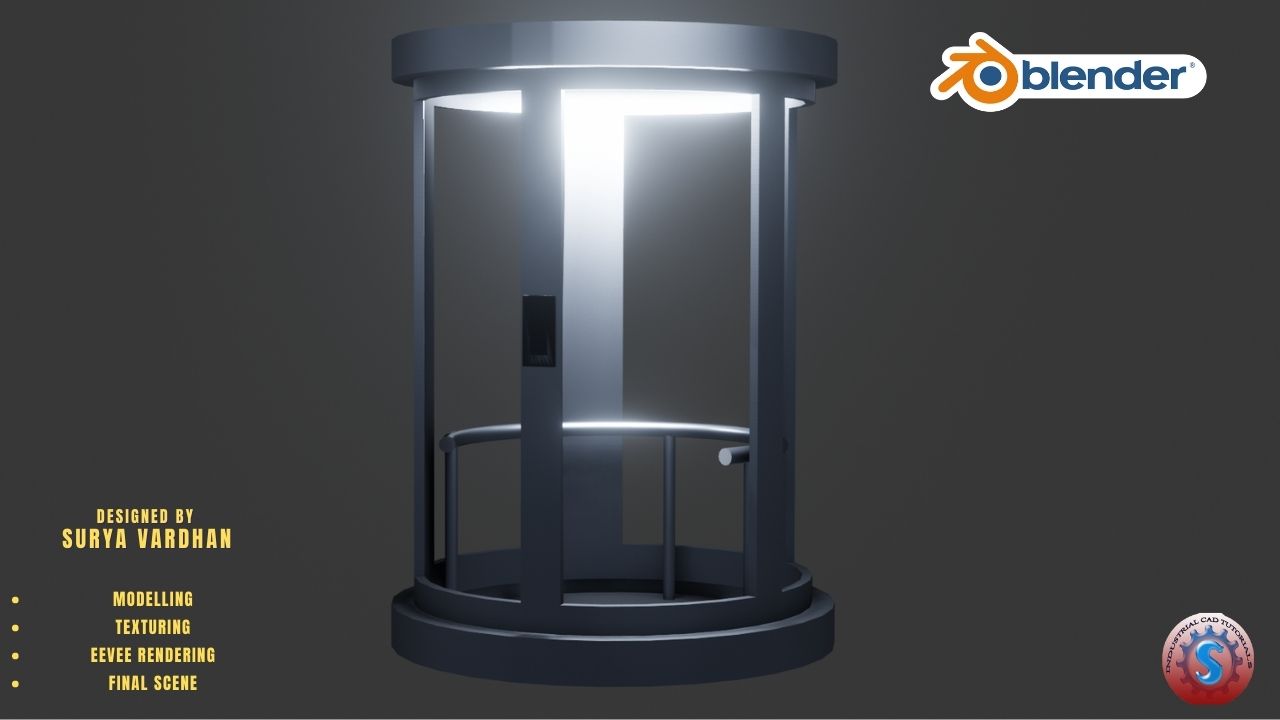A 3D Cylindrical Elevator in Blender refers to a digital representation of an elevator system with a cylindrical or cylindrical-like shape created using Blender, a popular 3D modeling and animation software. Such a 3D model can be used for various purposes, including architectural visualization, animation, and simulation. Here’s an introduction to the concept:
- Blender: Blender is an open-source, 3D computer graphics software that is widely used for creating 3D models, animations, and visualizations. It offers a range of tools and features for modeling, texturing, lighting, and rendering.
- Cylindrical Elevator: A cylindrical elevator is a unique type of elevator that has a cylindrical shape instead of the conventional boxy design. It often features a glass or transparent exterior, providing passengers with panoramic views as they travel. The cylindrical design is popular in modern and futuristic architectural designs.
- Modeling: To create a 3D cylindrical elevator in Blender, the artist or designer starts by modeling the elevator’s main structure. This involves creating the cylindrical shaft, the elevator car, and any supporting elements such as rails or guide systems.
- Texturing and Materials: The exterior of the cylindrical elevator is typically made of glass or transparent materials to offer unobstructed views. Proper material and texture mapping in Blender is essential to achieve the desired appearance, such as glass with reflections and transparency.
- Interior Design: In addition to the exterior, the interior of the elevator can be designed in detail, including the control panel, lighting, and any decorative elements. This interior design is important for realistic and immersive 3D representations.
- Animation: If the goal is to create an animated 3D cylindrical elevator, Blender provides animation tools to simulate the movement of the elevator car within the shaft. This can include setting keyframes for different elevator positions and creating realistic motion.
- Lighting and Rendering: Proper lighting is crucial to create realistic and visually appealing 3D renderings. Blender offers various lighting options, including natural lighting through transparent surfaces and artificial lighting within the elevator car.
- Camera Work: Careful camera placement and animation are essential to showcase the elevator’s operation and views. Dynamic camera angles and movements can enhance the visual presentation.
- Architectural Visualization: The 3D model of a cylindrical elevator can be integrated into larger architectural visualizations to showcase its placement within a building or structure. It can be part of a broader representation of a commercial space or a futuristic skyscraper, for example.
- Simulation and Training: In some cases, 3D cylindrical elevator models created in Blender may be used for simulation or training purposes. This can include training elevator operators or demonstrating the functionality of a unique elevator design.
Creating a 3D Cylindrical Elevator in Blender allows designers, architects, and animators to explore innovative and visually stunning elevator concepts, whether for architectural projects, presentations, or immersive animations. The software’s flexibility and rendering capabilities make it a valuable tool for bringing such designs to life in a virtual 3D environment.

